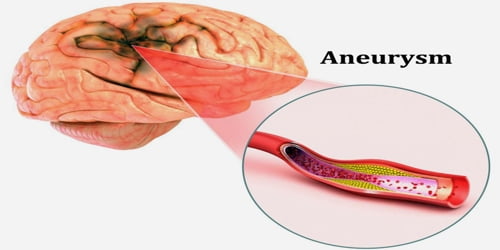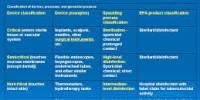Aneurysm
Definition: An aneurysm occurs when an artery’s wall weakens and causes an abnormally large bulge. This bulge can rupture and cause internal bleeding. Although an aneurysm can occur in any part of your body, they’re most common in the:
- brain
- aorta
- legs
- spleen
Aneurysms can also be a nidus (starting point) for clot formation (thrombosis) and embolization. The word is from Greek: ἀνεύρυσμα, aneurysma, “dilation”, from ἀνευρύνειν, aneurynein, “to dilate”. As an aneurysm increases in size, the risk of rupture increases, leading to uncontrolled bleeding.
Aneurysms can occur anywhere, but the most common are:
- Aortic aneurysm occurs in the major artery from the heart
- Cerebral aneurysm occurs in the brain
- Popliteal artery aneurysm occurs in the leg behind the knee
- Mesenteric artery aneurysm occurs in the intestine
- Splenic artery aneurysm occurs in an artery in the spleen
Facts on aneurysms –
- Aneurysms affect a variety of arteries. The most significant aneurysms affect the arteries supplying the brain and the heart. An aortic aneurysm affects the body’s main artery.
- The rupture of an aneurysm causes internal bleeding.
- The risk of an aneurysm developing and rupturing varies between individuals. Smoking and high blood pressure are major risk factors for the development of an aneurysm.
- Some types of aneurysm may need surgical treatment to prevent rupture. Doctors will only operate on others if they are life-threatening.
Causes and Symptoms of Aneurysms: Aneurysms have a variety of causes including high blood pressure and atherosclerosis, trauma, heredity, and abnormal blood flow at the junction where arteries come together.
There are other rare causes of aneurysms. Mycotic aneurysms are caused by infections of the artery wall. Tumours and trauma can also cause aneurysms to form. Drug abuse, especially cocaine, can cause the artery walls to inflame and weaken.

Symptoms of an aneurysm vary with each type and location. It’s important to know that aneurysms that occur in the body or brain generally don’t present signs or symptoms until they rupture.
Aneurysms that occur near the surface of the body may show signs of swelling and pain. A large mass may also develop. The symptoms of ruptured aneurysms anywhere in the body can include:
- bleeding
- increased heart rate
- pain
- feeling dizzy or lightheaded
Diagnosis, Treatment and Prevention of Aneurysms: The diagnostic tools used to find arterial damage often depend on the location of the problem. CT scans and ultrasound methods are common tools used to diagnose or find blood vessel irregularities. CT scans use X-rays to examine the inside of the patient’s body. This allows the doctor to see the condition of the blood vessels, as well as any blockages, bulges, and weak spots that may be inside the blood vessels.
The treatment of arterial aneurysms has been limited to either surgical intervention or watchful waiting in combination with control of blood pressure. Some aneurysms may require surgery to reinforce the artery wall with a stent. In cases where an aneurysm has ballooned out the side of the blood vessel, a coiling procedure may be done to close off the area.
Preventing an aneurysm is not always possible, as some are congenital, meaning they are present from birth. However, some lifestyle choices can affect the risk:
- Smoking is a risk factor for both aortic aneurysms and the rupture of an aneurysm anywhere in the body. Quitting smoking can reduce the risk of a severe aneurysm.
- Managing blood pressure can also minimize the risk of an aneurysm. Healthful blood pressure can be achieved through dietary measures, regular exercise, and medications.
- Obesity can put extra pressure on the heart, so taking these steps is important for reducing stress on the artery walls.
- A healthful diet can also reduce cholesterol and decrease the risk of atherosclerosis. Fusiform aneurysms are often linked to atherosclerosis.
Anyone diagnosed with an aneurysm and prescribed a conservative treatment plan can work with a healthcare practitioner to address any risk factors.
Information Source:
















